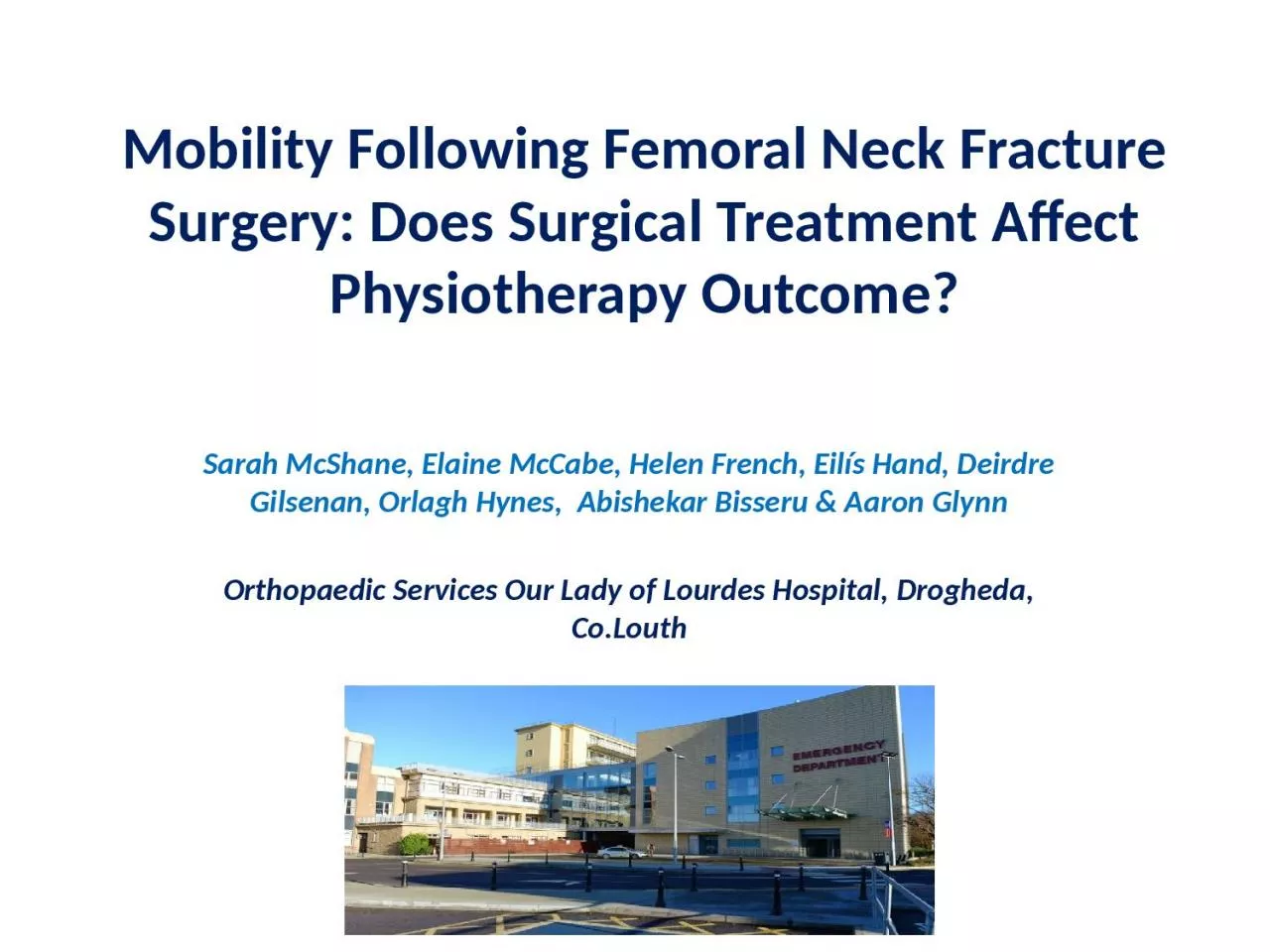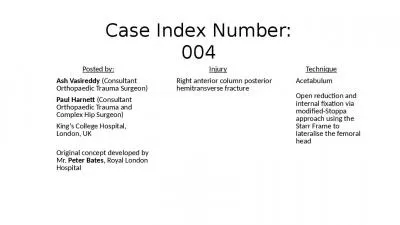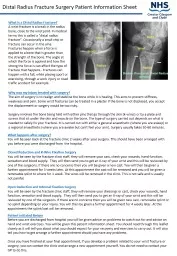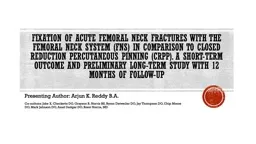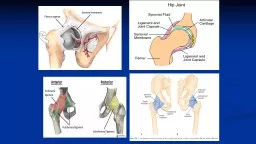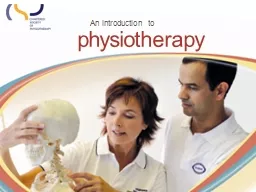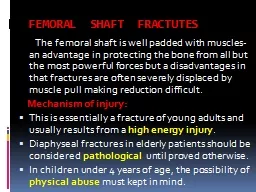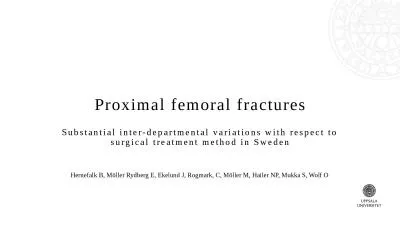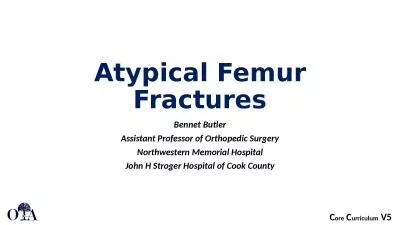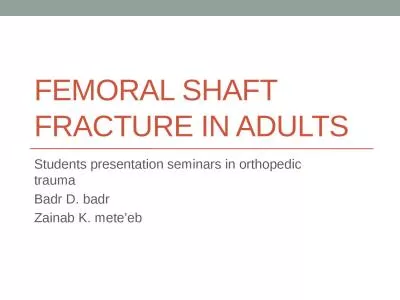PPT-Mobility Following Femoral Neck Fracture Surgery: Does Surgical Treatment Affect Physiotherapy
Author : mia | Published Date : 2024-03-15
Sarah McShane Elaine McCabe Helen French Eilís Hand Deirdre Gilsenan Orlagh Hynes Abishekar Bisseru amp Aaron Glynn Orthopaedic Services Our Lady of Lourdes
Presentation Embed Code
Download Presentation
Download Presentation The PPT/PDF document "Mobility Following Femoral Neck Fracture..." is the property of its rightful owner. Permission is granted to download and print the materials on this website for personal, non-commercial use only, and to display it on your personal computer provided you do not modify the materials and that you retain all copyright notices contained in the materials. By downloading content from our website, you accept the terms of this agreement.
Mobility Following Femoral Neck Fracture Surgery: Does Surgical Treatment Affect Physiotherapy: Transcript
Download Rules Of Document
"Mobility Following Femoral Neck Fracture Surgery: Does Surgical Treatment Affect Physiotherapy"The content belongs to its owner. You may download and print it for personal use, without modification, and keep all copyright notices. By downloading, you agree to these terms.
Related Documents

